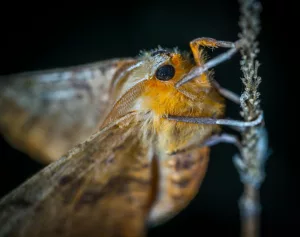When we look at a forest, it’s easy to see a collection of trees standing tall and separate, each seemingly independent and solitary. However, groundbreaking research has revealed that trees are far from isolated entities. Beneath the forest floor lies a hidden network of connections—an intricate web of roots and fungi that allow trees to “talk” to each other. This system, often referred to as the “wood wide web,” enables trees to exchange information, share resources, and support one another in ways that were once unimaginable.
This fascinating discovery challenges traditional notions of nature as a space dominated solely by competition. Instead, forests are now understood to be collaborative ecosystems, where trees form interdependent communities. Through underground fungal networks and airborne chemical signals, they communicate warnings, nurture their young, and adapt to environmental changes. In this article, we’ll explore how trees interact, the scientific mechanisms behind their communication, and the profound implications for conservation and ecosystem health.
The Science Behind Tree Communication
How Do Trees Communicate?
The primary way trees “talk” to each other is through their roots and an underground network of fungi called mycorrhizal fungi. These fungi form symbiotic relationships with trees, attaching to their roots and creating a vast web that connects multiple trees within a forest. In exchange for sugars produced through photosynthesis, the fungi provide trees with essential nutrients like nitrogen and phosphorus. This mutually beneficial partnership is the foundation of the forest’s communication network.
Through this underground web, trees share resources and send signals. For example, when a tree is attacked by pests, it can release chemical messages through the mycorrhizal network to warn nearby trees. These neighboring trees may then ramp up their defenses, producing chemicals in their leaves to deter herbivores. This ability to share information shows that trees are not isolated competitors but active participants in a connected ecosystem.
The Role of Airborne Signals
In addition to underground communication, trees also release volatile organic compounds (VOCs) into the air. These chemical signals act as warnings to other trees in the vicinity. For instance, if a tree is under attack by insects, it emits VOCs that alert neighboring trees to prepare their defenses. This dual system of communication—both underground and through the air—demonstrates the sophisticated ways trees interact and adapt to threats in their environment.
These chemical exchanges are not limited to trees alone. Other plants, and even animals, can respond to these airborne signals, creating a dynamic web of interaction that extends beyond individual species. This interconnectedness highlights the forest’s complex and collaborative nature.
The Role of Mycorrhizal Fungi
Building the Wood Wide Web
At the heart of tree communication lies the mycorrhizal network, often described as nature’s underground internet. This network connects the roots of trees and plants, forming a vast, interwoven system that can span entire forests. Through this network, trees can share water, nutrients, and even carbon, ensuring the survival of the entire ecosystem.
Research has revealed that larger, older trees, known as “mother trees,” serve as central hubs in these networks. They distribute resources to younger or weaker trees, especially saplings growing in low-light conditions. By providing extra nutrients and water, mother trees help sustain the next generation, ensuring the forest’s long-term resilience.
Symbiosis Between Trees and Fungi
The relationship between trees and fungi is a remarkable example of symbiosis. Trees supply fungi with the carbohydrates they produce during photosynthesis, while the fungi enhance the trees’ ability to absorb nutrients from the soil. This partnership boosts the health and growth of the forest as a whole. Fungi also act as mediators, transferring resources between trees and even prioritizing trees in distress.
This interconnected system underscores the cooperative nature of forests, where the survival of one tree often depends on the health of its neighbors. Far from being isolated organisms, trees are part of a deeply intertwined community.
How Trees Support Each Other
Nurturing Saplings and Kin Recognition
One of the most surprising findings about tree communication is the ability of trees to recognize and nurture their offspring. Studies have shown that mother trees can identify their kin and provide them with additional resources through the mycorrhizal network. This support gives saplings a better chance of survival in the competitive environment of the forest floor, where light and nutrients are scarce.
This nurturing behavior goes beyond mere resource-sharing. Mother trees can also alter their chemical signals to support young trees, creating conditions that promote growth. This discovery challenges the long-held view of forests as battlegrounds and highlights their collaborative nature.
Sharing Resources Across Species
The mycorrhizal network doesn’t just connect trees of the same species—it often links trees of different species as well. This means that a birch tree, for example, can share nutrients with a fir tree, creating a web of interdependence that spans the forest. This resource-sharing ensures that the entire ecosystem remains balanced, with stronger trees supporting weaker ones during times of stress.
During periods of drought or disease, this network becomes even more critical. Trees affected by environmental stress can receive nutrients and water from their neighbors, demonstrating the forest’s ability to act as a cohesive, self-regulating system.
Implications for Conservation and Forest Health
Protecting the Wood Wide Web
The discovery of tree communication has profound implications for forest conservation. Logging, deforestation, and other human activities can disrupt the mycorrhizal network, severing the connections between trees and weakening the entire ecosystem. Understanding the importance of these networks highlights the need to manage forests in ways that preserve their integrity.
For example, conservationists are now advocating for selective logging practices that leave mother trees intact, ensuring that they can continue to support younger trees. Protecting these hubs of communication is essential for maintaining the health and resilience of forests.
The Role of Reforestation and Restoration
Reforestation efforts can also benefit from understanding tree communication. By planting diverse species and fostering the growth of mycorrhizal fungi, restoration projects can create ecosystems that are more robust and self-sustaining. These approaches emphasize the importance of nurturing not just individual trees but the connections that bind them together.
As we face global challenges like climate change and biodiversity loss, preserving the hidden language of forests becomes increasingly vital. Healthy forests play a critical role in carbon sequestration, water regulation, and habitat protection, making their conservation a priority for the health of the planet.
Conclusion
The idea that trees talk to each other reshapes how we understand forests and their role in the natural world. Far from being isolated individuals, trees are part of a vast, interconnected community that thrives on cooperation and communication. Through underground fungal networks and chemical signals, they share resources, warn of dangers, and support one another in ways that sustain the entire ecosystem.
These revelations challenge traditional views of nature as a battleground and highlight the importance of protecting the complex networks that underpin forest health. As we continue to uncover the secrets of the “wood wide web,” we gain not only a deeper appreciation for the intelligence of trees but also valuable insights into how we can better conserve and restore the world’s forests. Understanding this hidden language offers a powerful reminder of the interconnectedness of life on Earth and the critical role forests play in sustaining it. By protecting these ecosystems, we safeguard not only trees but the intricate networks that support all life within them.




